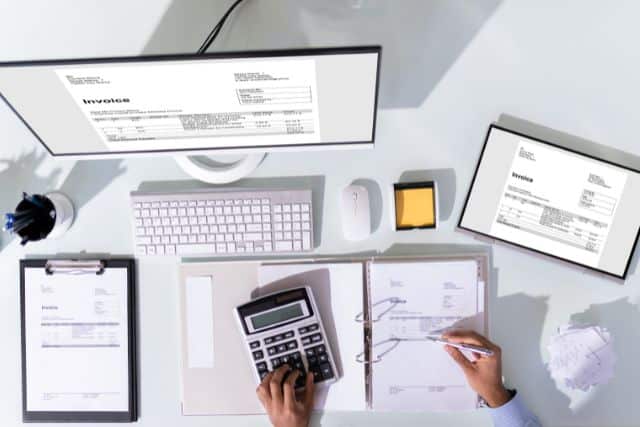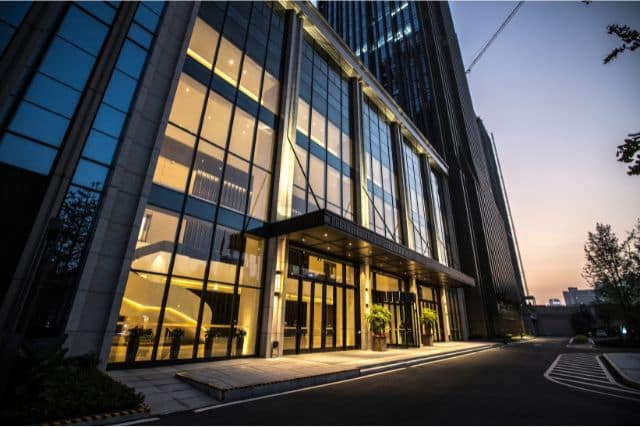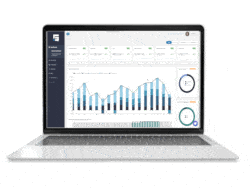Escalations in commercial real estate refer to specific clauses in lease agreements that allow landlords to increase rent over time. These clauses enable landlords to keep pace with rising costs associated with property ownership.
Both gross leases and NNN leases will have built-in lease escalation rates. However, the base rent lease escalation rate will generally increase more each year with a gross lease rather than a NNN lease. With an NNN lease, the tenant will pay both base rent and additional rent. The additional rent covers the costs of operating the space, including taxes, insurance, and common area maintenance fees. The variable costs of those expenses are covered under the second rent.
With a gross lease, all the costs of operating the space are built into the base rent. The owner must make sure to cover the increases in operational costs over time and throughout the term of the lease.
For tenants, escalations are an essential consideration, as they can significantly affect occupancy costs over the lease term. It is crucial for both landlords and tenants to understand how escalations work. This knowledge helps negotiate fair lease agreements and prevent potential disputes. One of the key priorities for commercial real estate owners is maximizing the profitability of lease agreements. A vital step in achieving this is by understanding and effectively utilizing commercial lease escalation rates.
What are Commercial Lease Escalation Rates?
Business lease escalation rates, often known as rent escalation clauses, are standard terms in business leases that describe how rent will increase over the lease term. These clauses often account for increased running costs, inflation, and other things that may affect property value. Common escalation methods consist of fixed percentage increases, inflation-linked adjustments (such as CPI), or a combination of these approaches.
Escalation rates refer to the annual increase in rent that a tenant is required to pay over the course of their lease term. As a commercial real estate owner, commercial lease escalation rates allow you to keep up with inflation and other operating costs throughout a multi-year lease. In this blog post, we will explore the different types of escalation rates and how they can be used to maximize the profitability of your lease agreements. Additionally, we will discuss how STRATAFOLIO can ensure you aren’t losing money.
Types of Escalation Rates
There are several types of commercial lease escalation rates that a commercial real estate owner can use. The most common types include fixed escalation rates, Consumer Price Index (CPI) escalation rates, and operating cost escalation rates.
Fixed Escalation Rates
A fixed escalation rate is a predetermined rate that is agreed upon in the lease agreement. For example, the lease may specify a 3% annual increase in rent payments. Fixed escalation rates can provide a predictable and steady increase in rent. However, they may not keep pace with inflation or changes in operating costs.
CPI Escalation Rates
A CPI escalation rate is tied to the inflation rate as measured by the Consumer Price Index. The rent increase is based on the percentage increase in the CPI. CPI escalation rates can provide an increase in rent that is tied to inflation. However, they may not accurately reflect the specific costs associated with your property.
Operating Cost Escalation Rates
An operating cost escalation rate is based on the landlord’s operating costs. These include property taxes, insurance, and maintenance expenses. The rent increase is calculated based on the percentage increase in operating costs. Operating cost escalation rates can provide an increase in rent that is directly tied to maintaining your property. However, they may also be subject to unexpected fluctuations.
How to Calculate Commercial Lease Escalation Rates
Both the landlords and the tenants must know how to calculate the rate of escalation. The formula for setting a rent increase commercial lease is easy:
New Rent = Current Rent × (1 + Rate of Escalation)
For example, if the annual rent is $50,000 and the rate of escalation is 3%, the next year’s rent would be $51,500. This formula can be applied whether the increase is based on a fixed percentage or linked to inflation through a rent escalation clause.
In some agreements, the calculation may also include additional adjustments for taxes or maintenance, especially when managing a rent increase commercial property under an NNN lease.
Using reliable software to automate these calculations helps you stay accurate and avoid costly mistakes across your portfolio.
Maximizing Profitability through Escalation Rates
We know that, as a commercial real estate owner, your main goal is to maximize profitability. To do this, it’s important to consider which type of commercial lease escalation rates are best suited for your property and your business tenants. For example, if your property is located in an area with high inflation, a CPI escalation rate may be the best fit for you. If your property has high operating costs, an operating cost escalation rate may be more suitable than a CPI escalation rate.
It’s important to consider the unique characteristics of your property and the needs of your tenants when selecting commercial lease escalation rates.
Market Trends That Affect Lease Escalation Rates
Commercial real estate markets are subject to several factors that influence landlords’ pricing escalation policies and underpin price appreciation. Over the last couple of years, escalating operating costs and inflation have led to a growing demand for CPI-indexed rent escalation clauses. Property landlords are increasingly interested in dropping fixed-rate increases in favor of allowing rent to match actual living expenditures.
Economic trends also come into play. Under low-inflationary periods, tenants bargain for less growth per year, and high-cost environments have landlords apply data-based models of escalation to maintain income. Competitive marketplace conditions and tenant retention also influence the degree to which a commercial property rent increase is pitched.
Staying on top of these shifts allows owners to benchmark escalation practices against general market trends, making leases remain profitable and fair.
Negotiating Escalation Rates
When negotiating a commercial lease agreement, it’s important to clearly define what type of commercial lease escalation rates are being used and calculated. It is also important to ensure that the tenant understands all of the terms of the lease agreement. By negotiating and clearly defining the escalation rate, you can avoid misunderstandings and ensure a mutually beneficial lease agreement. Also, be prepared to possibly negotiate:
- the length of the lease,
- the rent amount,
- or other terms of the lease agreement.
Frequently Asked Questions
1. What is a rent escalation clause in a commercial lease?
Simply put, a rent escalation clause specifies how and when rent will rise over the course of the lease. The increase could be based on changes in real estate prices, linked to inflation, or a set percentage.
2. How does rent escalation benefit landlords and tenants?
Both parties benefit from a stable environment brought about by rent increases. They ensure that rental income stays up to date with rising costs. Budgeting will be easy for tenants because they will know exactly how much they will be paying each month for the duration of the lease.
3. How do landlords decide the rate of escalation?
The escalation rate is typically set through measurement of performance in the market, inflation data, and property operating expenses. Landlords prefer a fixed rate or an adjustment based on CPI, depending on lease term and local economic cycles.
4. Can tenants negotiate a rent increase in a commercial lease clause?
Yes. Tenants can negotiate escalation frequency, percentage caps, or even hybrid terms combining fixed and CPI-based increases. Clear documentation helps prevent confusion later in the lease.
Using STRATAFOLIO for Commercial Lease Escalation Rates
Effectively managing your commercial lease escalation rates is a crucial aspect of your business as a commercial real estate owner. However, manually calculating and keeping track of these increases across a portfolio can feel like an impossible task. It’s time-consuming, complicated, and frustrating, which can lead to missed escalations and less money in your pocket. Nine out of ten companies we encounter have missed lease rate escalations.
Luckily for you, we know how to take care of this! STRATAFOLIO offers a comprehensive commercial property management solution. This allows you to organize data on your tenants, rents, common area maintenance, and much more. Our program automates the escalation process by sending you email reminders of upcoming escalations. Your invoices will always reflect the most current rent increases. Additionally, we seamlessly integrate with both QuickBooks Desktop and QuickBooks Online. This makes it easier for you to manage your finances. Schedule a 1:1 demo with us today and discover how STRATAFOLIO can fulfill all your business needs.




